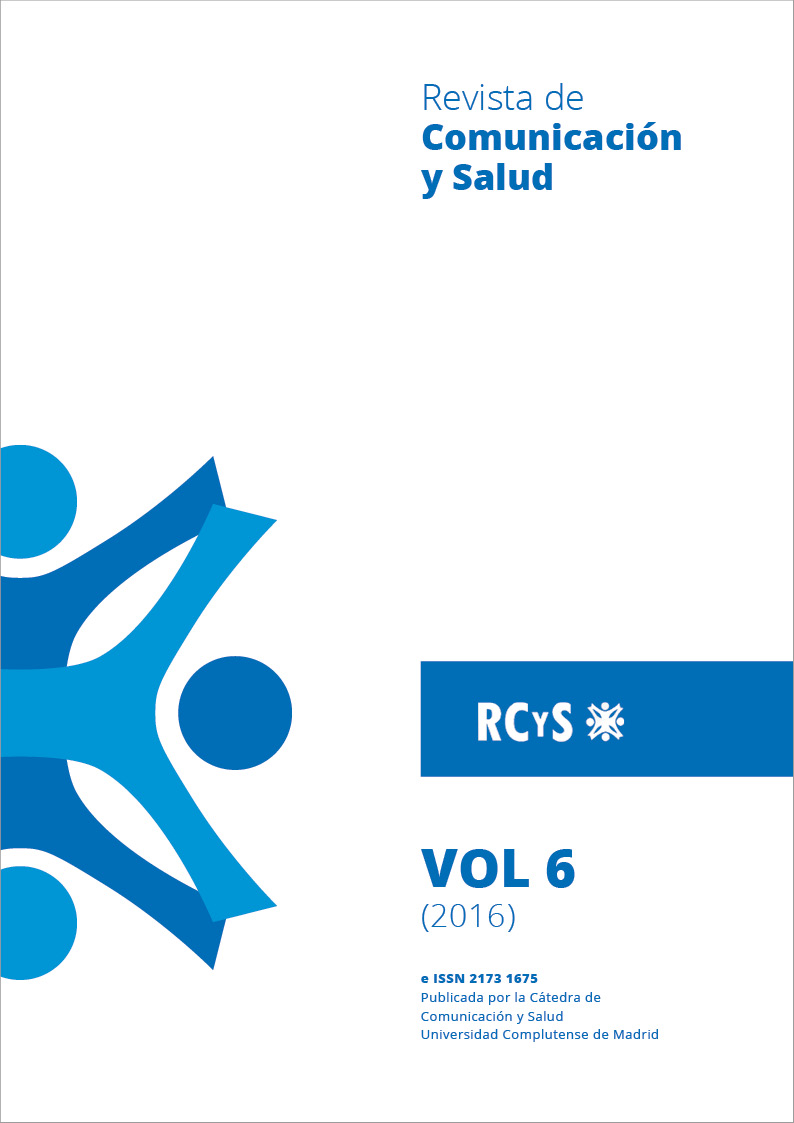Application of an electronic instrument to identify risky sexual behaviors among university students
DOI:
https://doi.org/10.35669/revistadecomunicacionysalud.2016.6(1).15-27Keywords:
sexual behaviors; sexually transmitted infections; internet, health promotion; mexican youthAbstract
To detect risky sexual behavior in Mexican university students, an electronic survey was designed, which was applied anonymously through the internet. Two pilot studies on paper were performed. Based on the results the current version of the instrument was programmed in Google Formularies. An invitation to participate was sent by e-mail, including a link to the instrument, which remained open for six days. The results were analyzed in SPSS. The invitations were sent to 1940 students from eight undergraduate programs. The percentage of response was 8.2% (160/1940). For the analysis were considered 116 surveys from students between 18-24 years, 52% men and 48% women. 73% referred ever having sex, 32% have had more than four partners in their lifetime. 17.2% believes that washing after sex is protective against STIs, 44% think using public restrooms is a risk factor. Only 2.6% consider alcohol and 27% drugs as risk factors. From sexually active students (n=85), 90% have vaginal sex, 36 report always using a condom, 82% have oral sex, but only six always use a condom; 42.3% have anal sex, but only ten always use a condom. The 64.7% do not feel uncomfortable talking about their sexual life. The results showed that the instrument worked properly, and give us alarm of the risk exposure of the university students. This instrument was incorporated into a sexual health promotion web page available in www.esalud.uady.mx (in Spanish). The main users of the internet are the youth, representing a significant opportunity for health promotion and research.
Downloads
References
Cobb, N.K., Graham, A.L. (2012). Health Behavior Interventions in the Age of Facebook.American Journal of Preventive Medicine, 43, 571–572. doi: 10.1016/j.amepre.2012.08.001.
Edouard, E., Edouard, L. (2012). Application of Information and Communication Technology for Scaling up Youth Sexual and Reproductive Health. Afr J ReprodHealth, (SpecialEdition); 16, 197-205.
Fleiz Bautista, C., Villatorio Velásquez, J., Medina Mora, M., Alcantar Molinar, E., Navarro Guzmán, C., Blanco Jaimes, J. (1999). Conducta sexual en estudiantes de la ciudad de México. Salud Mental, 22, 14-19.
Gutierrez, J.P., Bertozzi, S.F., Conde-Glez, C., Sanchez-Aleman, M.A. (2006). Risk behaviors of 15–21 year olds in Mexico lead to a high prevalence of sexually transmitted infections: results of a survey in disadvantaged urban areas. BMC Public Health, 6, 49.doi: 10.1186/1471-2458-6-49
Lazcano-Ponce, E., Smith, J.S., Muñoz, N., Conde-Glez, C., Juárez-Figueroa, L., Cruz, A., Hernández, M. (2001). High prevalence of antibodies to herpes simplex virus type 2 among middle aged women in México city. Sex Transm Dis, 28, 270-276.
Levine, D. (2011). Using Technology, New Media, and Mobile for Sexual and Reproductive Health. Sex Res Soc Policy,8,18–26.doi10.1007/s13178-011-0040-7
Lintonen, T.P., Konu, A.I., Seedhouse, D. (2008). Information technology in health promotion. Health Education Research, 23, 560–566.doi: 10.1093/her/cym001
López, N., Vera, L.M., Orozco, L.C. (2001). Diferencias en los conocimientos, actitudes y comportamientos sexuales relacionados con el SIDA, entre hombres y mujeres jóvenes de Bucaramanga. Colombia Medica, 32, 32-40.
Mendoza, L.A., Arias, M., Pedroza, M., Micolta, P., Ramírez, A., Cáceres, C., López, D., Núñez, A., Acuña, M. (2012). Actividad sexual en adolescencia temprana: problema de salud pública en una ciudad colombiana. Revista chilena de obstetricia y ginecología, 77, 271-279.
OMS.2013. Infecciones de transmisión sexual. Consultado el 7 de agosto de 2014 en: http://www.who.int/mediacentre/factsheets/fs110/es/
Sánchez-Alemán, M., Uribe-Salas, F., Conde-González, C. (2002). La infección por el virus del papiloma humano, un posible marcador biológico de comportamiento sexual en estudiantes universitarios. Salud Pública de México, 44, 442-447.
Strecher, V. (2007). Internet Methods for Delivering Behavioral and Health-Related Interventions (eHealth). Annu. Rev. Clin. Psychol,3, 53–76.
Théodore, F.L., Gutiérrez, J.P., Torres, P., Luna, G. (2004). El sexo recompensado: una práctica en el centro de las vulnerabilidades (ITS/VIH SIDA) de las jóvenes mexicanas. Salud Pública Méx, 46, 104-112.
Tirado-Gómez, L., Mohar-Betancourt, A., López-Cervantes, M., García-Carrancá, A., Franco-Marina, F. y Borges, G. (2005). Factores de riesgo de cáncer cervicouterino invasor en mujeres mexicanas. Salud Pública de México, 47, 342-350.
Whiteley, L.B., Mello, J., Hunt, O., and Brown L.K. (2012). A Review of Sexual Health Web Sites for Adolescents. Clinical Pediatrics, 51, 209–213. doi: 10.1177/0009922811423311.
Downloads
How to Cite
Issue
Section
License
Disclaimer: As of 2023, RCyS is licensed under the Creative Commons Attribution-NonCommercial 4.0 International License (CC BY-NC 4.0).
Articles from 2011 to 2022 are under a Creative Commons CC BY 4.0 License that allows copying and redistributing the material in any medium or format, remixing, transforming and building upon the material for any purpose, including commercial.
We also inform that RCyS is adhered to the Declaration of Berlin.






